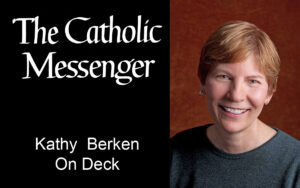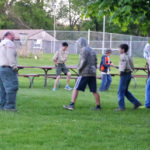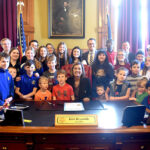When I was a staff reporter in the ’90s for “The Compass,” Green Bay’s Catholic newspaper, our diocesan director of Pastoral Services — Mark Mogilka — loved to ask, “So, are we Easter people yet?” He had a way of focusing on the significance of each liturgical season with unique challenges for the diocese’s 100-plus parishes.
Perhaps 30 years ago we more easily aligned our theology with our everyday spirituality. We spoke often about being “Easter People” in those 50 days between the resurrection and Pentecost. We changed our liturgical colors from purple to white and gold, we stopped fasting and started eating meat on Fridays again. We got our news usually once a day from newspapers, magazines, radio and television, so we didn’t have today’s minute-to-minute bombardment of the images and sounds of global tensions and tragedies that can overwhelm us.
More people attended Mass back then, giving more of us face-to-face encouragement to put away our penitential practices and replace them joyfully with our regular routines. Because Mark’s demeanor was generally upbeat and enthusiastic, the answer to his question was often met with, “Absolutely!” or “Finally, yes!”
Today’s social and political climate feels different and carries with it the weight of fear, uncertainty, anxiety and unrest, so to answer the question, “Are we Easter People yet?” may be met with skepticism, negativity or “What does that even mean?”
I think that we can authentically change our spiritual attire from sackcloth-and-ashes to radiant robes and not just because the liturgical calendar has turned a page but because we cannot function well in a 24/7 cycle of penance all year long. Just as those of us who live in climates where we actually notice the change in seasons appreciate it more when spring finally arrives, the same is true for the seasons of the Church. Advent preparation leads to a merry Christmas. Lenten penance leads to the joy of the resurrection. Ordinary time allows us to pray, read, worship and continue the daily rhythm of our spiritual practices.
So, then, how do we don the face of Easter People without creating some kind of false narrative just to fit into the liturgical season? We do it with faith, trust and the hard work of changing what we can and the wisdom of accepting what we cannot. Alcoholics Anonymous had it right by teaching everyone how to live a healthy life, even if it is just minute to minute. During Lent we focused on prayer, faith and the hope of spiritual transformation, which we continue to carry as practices throughout the year.
Father Henri J.M. Nouwen wrote words 30 years ago that still ring true today: “The Easter season is a time of hope. There still is fear, there still is a painful awareness of sinfulness, but there also is light breaking through. Something new is happening, something that goes beyond the changing moods of our life” (“Show Me the Way: Daily Lenten Readings”).
Easter is a time to affirm that Jesus continues to walk on the road (to Emmaus) with us, even though we may be distracted by the world’s cares. Because we believe “He is Risen!” we can find those rays of hope that shine a light on our path, dark as it may seem at the moment. It’s faith that brings us to that hope that, as medieval mystic Julian of Norwich famously said, “All will be well, and all will be well and all manner of things will be well.”
(Kathy Berken is a spiritual director and retreat leader in St. Paul, Minnesota. She lived and worked at L’Arche in Clinton — The Arch from 1999-2009.)












